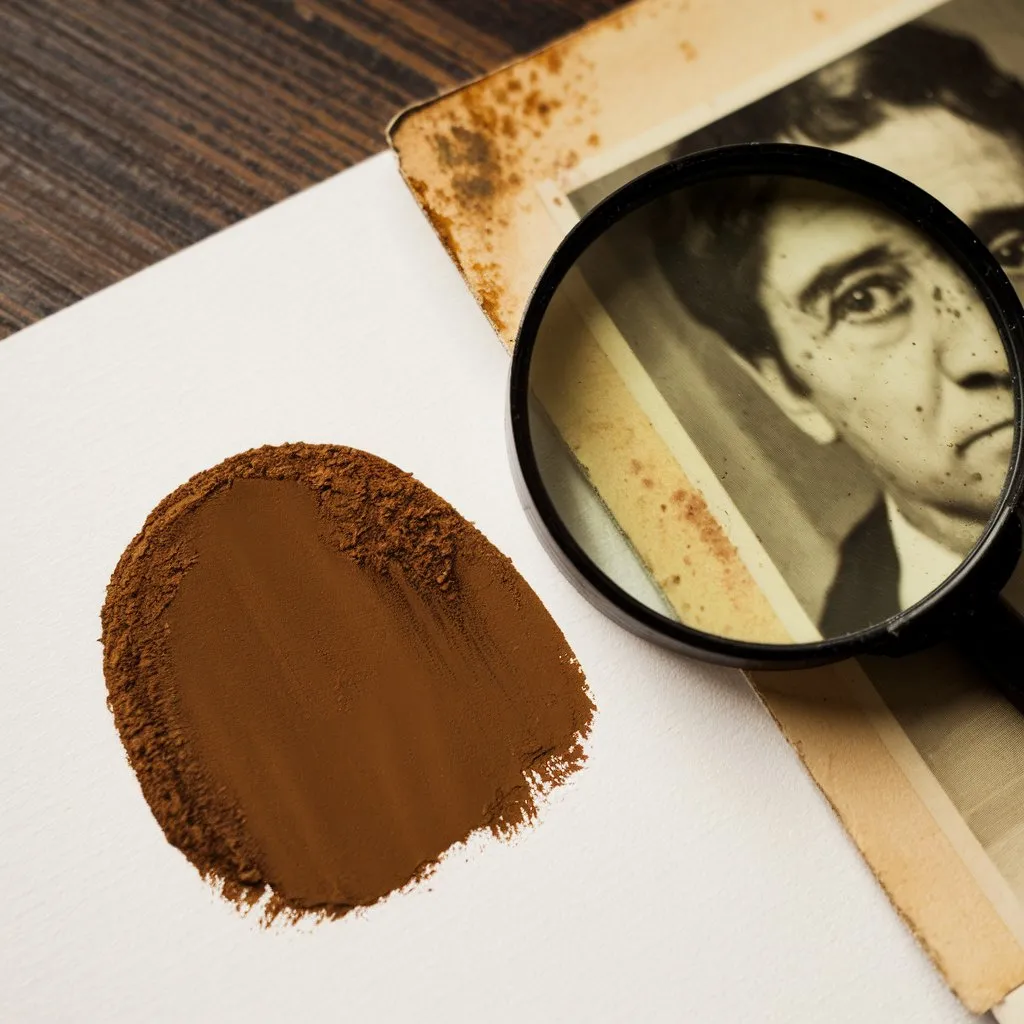Antique photography holds a special charm and intrinsic value, making them cherished treasures for historians, collectors, and enthusiasts alike. One of the most compelling aspects of these vintage photos is their unique aesthetic characteristics, among which the brown pigment often stands out. Understanding, identifying, and verifying the originality of the brown pigment in vintage photos can significantly enhance their value and authenticity. This comprehensive guide aims to provide you with critical insights, practical tips, and expert advice on how to easily identify the original brown pigment in antique photos.
Common Types of Brown Pigments
Before delving into the identification process, it is crucial to understand the historical context and the common types of brown pigments used in antique photography:
-
Sepia Toning: Originating in the mid-19th century, sepia toning became a popular method to improve the permanence and warmth of black and white photographs. Derived from the ink of the cuttlefish, sepia provided a rich, brownish hue.
-
Albumen Prints: Dominant from the 1850s to the late 19th century, albumen prints involved the use of egg whites to bind the photographic chemicals to paper, often resulting in a subtle brown tint.
-
Cyanotypes and Van Dyke Brown: Although lesser-known, these processes also contributed to the brown pigment in vintage photos. Van Dyke Brown, in particular, produced a distinct brown tone via iron salts and silver nitrate.

Steps to Identify Original Brown Pigment in Antique Photos
When examining antique photos, it’s vital to differentiate between original brown pigment and subsequent alterations or degradations. Follow these steps to ensure accurate identification:
1. Initial Visual Inspection
Begin with a careful visual examination of the photograph. Look for uniformity in color and texture:
- Color Consistency: Original brown pigment generally exhibits a consistent tone throughout the photograph. Variations may indicate alterations or degradation.
- Surface Reaction: Use a magnifying glass to inspect the surface for any inconsistencies or modern printing techniques. The grain and sheen can reveal a lot about the photo's age and authenticity.
2. Observe the Photo Paper
The type and texture of the photo paper used can provide essential clues. Antique photos were typically printed on specific paper types, all of which had distinctive characteristics:
- Albumen Prints: Albumen paper has a distinctly smooth and glossy finish.
- Silver Gelatin: Introduced around the 1880s, it features a more matte appearance compared to albumen prints.
- Salt Print Paper: Characterized by a matte, slightly textured surface, commonly used in the 1840s and 1850s.
3. Chemical Testing
For a more definitive analysis, consider chemical testing. This can be performed by experts in photo conservation, who utilize various reagents to test for the presence and type of pigments:
- Silver Presence: Many vintage photos, including sepia-toned ones, were created using silver-based processes. Testing for silver can help confirm the photograph's antiquity.
- Iron Salts: Van Dyke Brown prints can be verified through tests specific to iron salts.
4. Consultation with Experts
If in doubt, consult with experts in antique photography. Professional appraisers and conservators can provide valuable insights and verify the originality of the brown pigment using advanced techniques and historical knowledge.
Impact of Authentic Brown Pigment on Value
Understanding the originality of brown pigment in vintage photos significantly impacts their value and historical significance. Genuine antique photographs with original brown pigments are often more valuable and sought-after due to their authenticity and aesthetic appeal.
Preserving Antique Photos
Once you've identified and authenticated a photograph, it’s crucial to preserve its condition. Follow these care tips:
- Proper Storage: Keep photos in a cool, dry, and dark environment to prevent fading and degradation.
- Handling With Care: Use gloves to handle photos, minimizing contact with oils and dirt from your hands.
- Archival-Quality Materials: Store and display photos using acid-free, archival-quality materials to prevent chemical reactions.
Narrative Value
Original brown pigment in vintage photos adds to the narrative and emotional value of the photograph. Each vintage photo has a story, often linked to historical events, familial legacy, or aesthetic movements. The authenticity of the pigment can validate these stories, making the photo not just a visual artifact but a documented piece of history.
Modern Reproductions vs. Original Prints
Distinguishing between modern reproductions and original prints is another critical aspect of identifying original brown pigments. Modern reproductions can mimic the look of antique photos but lack the historical and material authenticity. Knowing the differences, through visual and chemical analysis, can ensure genuine acquisitions.
Comparative Analysis
Sometimes, comparing your photograph with other known examples from the same era can provide clues. Museums, online archives, and photographic societies often provide access to high-resolution images of authenticated vintage photos. Comparing these with your photo can reveal similarities or discrepancies in brown pigmentation.

Expert Tips and Recommendations
- Document Your Findings: Keep a detailed record of your observations, tests, and expert consultations. This can aid in future verification and adds to the photo’s provenance.
- Stay Updated: Follow publications and attend seminars on antique photography to stay abreast of the latest techniques and discoveries in photo identification.
- Network with Enthusiasts: Join forums, online groups, and local clubs dedicated to antique photography. Sharing experiences and knowledge can immensely benefit your identification process.
Identifying original brown pigment in antique photos requires a blend of visual acuity, historical knowledge, and sometimes scientific analysis. The rich history embedded in the sepia tones, albumen prints, and Van Dyke Browns offers an authentic glimpse into the past, making the effort to verify their originality truly worthwhile. By following the outlined steps and employing expert advice, you can confidently authenticate and appreciate the timeless beauty of vintage photographs.
By fully understanding and appreciating these nuances, collectors, historians, and enthusiasts can ensure the preservation and celebration of these historical treasures for future generations. The genuine charm and historical richness of original brown pigment in antique photos make them not only aesthetically pleasing but also invaluable pieces of history.

 Vietnamese
Vietnamese









Nguyen Hoai Thanh
Nguyen Hoai Thanh is the Founder and CEO of Metaconex. With 12 years of experience in developing websites, applications and digital media, Nguyen Hoai Thanh has many stories and experiences of success to share.